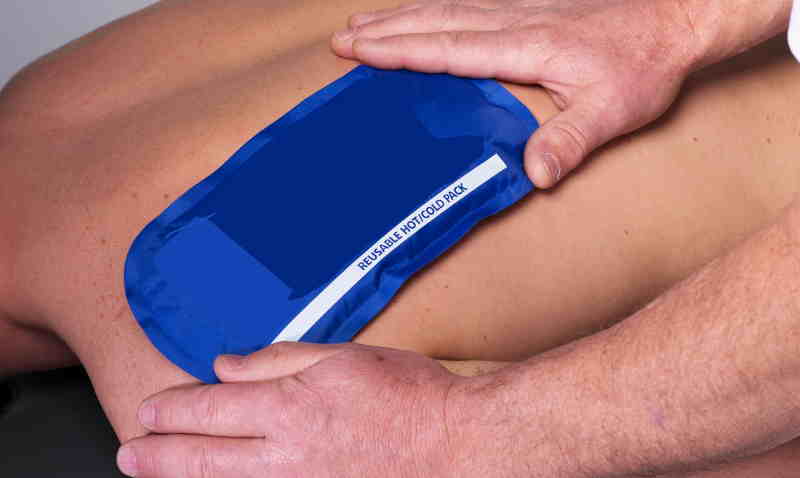Heat and cold therapy are often recommended to help relieve an aching pain that results from muscle or joint damage. Basic heat therapy, or thermotherapy involves using of a hot water bottle, steam, pads that can be heated in a microwave, or a warm bath. For cold therapy, or cryotherapy, a water bottle filled with cold water, a pad cooled in the freezer, or direct cold water can be used. In some cases, your treating physiotherapist may decide to apply alternating heat and cold to better manage the injury.
Heat Therapy
Applying heat to an inflamed area will dilate the blood vessels, promote blood flow, and help relax the sore and tightened muscles. Improved circulation can help eliminate the build-up of lactic acid waste that occurs after some types of exercise. Heat therapy is usually more effective than cold at treating chronic muscle pain or sore joints caused by arthritis. Heat is normally applied to the area for 20 minutes, up to three times a day, unless otherwise indicated.
Types of heat therapy include
- Applying safe heating devices to the area.
- Soaking the area in a hot bath.
- Using heated paraffin wax treatment.
Heat is useful for relieving
- Osteoarthritis
- Strains and sprains
- Tendonitis, or chronic irritation and stiffness in the tendons
- Warming up stiff muscles or tissue before activity
- Relieving pain or spasms relating to neck or back injury, including the lower back
- Applied to the neck, heat may reduce the spasms that lead to headaches.
Heat should not be used if
- The skin is hot, red or inflamed.
- The person has dermatitis or an open wound.
- The area is numb.
- The person may be insensitive to heat due to peripheral neuropathy or a similar condition.
Cold Therapy
Cold treatment reduces blood flow to an injured area. This slows the rate of inflammation and reduces the risk of swelling and tissue damage. It also numbs sore tissues, acting as a local anaesthetic, and slows down the pain messages being transmitted to the brain. It is most effective within 48 hours of an injury, especially where heat is being generated.
Some ways of using cold therapy include
- A cold compress applied to the inflamed area for 10 minutes, every 4 to 6 hours, for 3 days.
- Immersion or soaking in cold, but not freezing water.
- Massaging the area with an ice cube or an ice pack in a circular motion from two to five times a day, for a maximum of 2 minutes, to avoid an ice burn.
Cold treatment can help in cases of
- Osteoarthritis
- A recent injury
- Gout
- Strains
- Tendinitis, or irritation in the tendons following activity
- A cold mask or wrap around the forehead may help reduce the pain associated with migraine.
Cold is not suitable if
- There is a risk of cramping, as cold can make this worse
- The person is already cold or the area is already numb
- There is an open wound or blistered skin
- The person has some kind of vascular disease or injury, or sympathetic dysfunction, in which a nerve disorder affects blood flow
- The person is hypersensitive to cold
- Ice should not be used immediately before activity
Alternating Cold and Heat
When cold is applied to the body, the blood vessels contract, vasoconstriction occurs. This means that circulation is reduced, and pain decreases. Removing the cold causes vasodilation, as the veins expand to overcompensate. As the blood vessels expand, circulation improves, and the incoming flow of blood brings nutrients to help the injured tissues heal.
Alternating heat and cold can be useful for:
- Osteoarthritis
- Exercise Induced Muscle Damage (EIMD) or Delayed Onset Muscle Soreness (DOMS)

